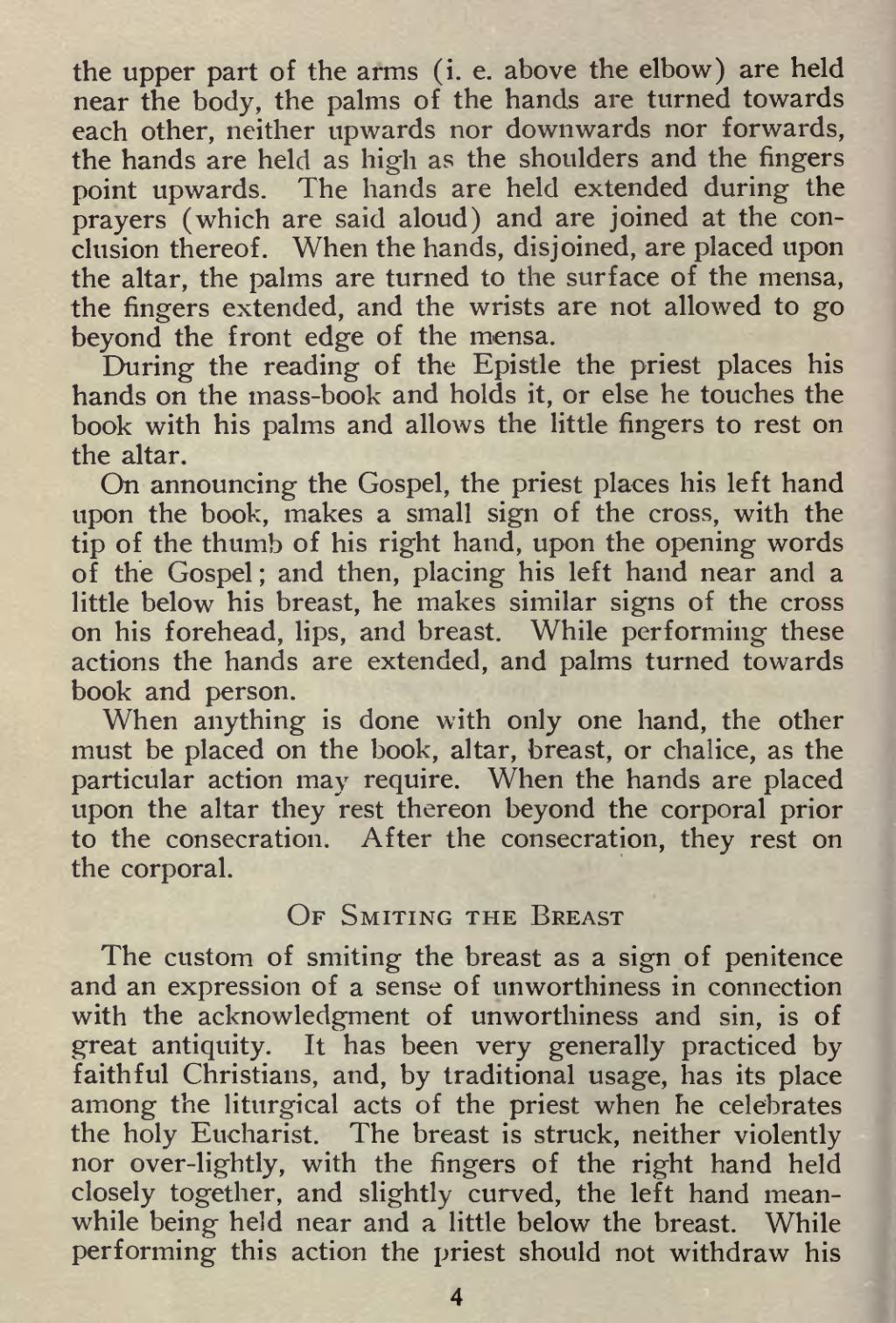the upper part of the arms (i. e. above the elbow) are held near the body, the palms of the hands are turned towards each other, neither upwards nor downwards nor forwards, the hands are held as high as the shoulders and the fingers point upwards. The hands are held extended during the prayers (which are said aloud) and are joined at the conclusion thereof. When the hands, disjoined, are placed upon the altar, the palms are turned to the surface of the mensa, the fingers extended, and the wrists are not allowed to go beyond the front edge of the mensa.
During the reading of the Epistle the priest places his hands on the mass-book and holds it, or else he touches the book with his palms and allows the little fingers to rest on the altar.
On announcing the Gospel, the priest places his left hand upon the book, makes a small sign of the cross, with the tip of the thumb of his right hand, upon the opening words of the Gospel; and then, placing his left hand near and a little below his breast, he makes similar signs of the cross on his forehead, lips, and breast. While performing these actions the hands are extended, and palms turned towards book and person.
When anything is done with only one hand, the other must be placed on the book, altar, breast, or chalice, as the particular action may require. When the hands are placed upon the altar they rest thereon beyond the corporal prior to the consecration. After the consecration, they rest on the corporal.
Of Smiting the Breast
The custom of smiting the breast as a sign of penitence and an expression of a sense of unworthiness in connection with the acknowledgment of unworthiness and sin, is of great antiquity. It has been very generally practiced by faithful Christians, and, by traditional usage, has its place among the liturgical acts of the priest when he celebrates the holy Eucharist. The breast is struck, neither violently nor over-lightly, with the fingers of the right hand held closely together, and slightly curved, the left hand meanwhile being held near and a little below the breast. While performing this action the priest should not withdraw his
